Reviews
Steve De Jarnatt
USA, 1988
Credits
Review by Victoria Large
Posted on 20 August 2013
Source MGM DVD
Related articles
Reviews
Miracle Mile by Rumsey
Categories Favorites: The Apocalypse
The first time I saw Miracle Mile, I couldn’t believe that I hadn’t heard of it sooner. A love story by way of a genuinely frightening apocalypse film, it has the feel of a firmly established cult classic. After that first viewing, I wondered why Miracle Mile wasn’t a regular on the repertory cinema circuit along with Repo Man and The Return of the Living Dead, and found it stranger still that the film was primarily available via a barebones, fullscreen DVD release when so many other eighties oddities had received lavish home video treatment. Yet, even as I wondered at Miracle Mile’s unjustly low profile, I felt equally surprised that the film had been made at all.
Written and directed by Steve De Jarnatt, who had previously helmed Cherry 2000 and now works mostly in series television, the film gets away with the kind of bleakness that’s apt to frighten producers and distributors, and it freely hops genres, alternately exploring the romance, absurd comedy, and deep horror intrinsic in its premise. It’s the sort of thing that might be tough to shelve at a video store, and not particularly easy to market. It’s often been reported that the script for Miracle Mile was considered for Twilight Zone: The Movie before the latter project became an anthology piece, and the Twilight Zone label actually would have suited De Jarnatt’s unusual film just fine. Rod Serling’s original Twilight Zone TV series can feel transgressive even a half century later, toying with form and dramatizing some of our worst fears in a space often reserved (then and now) for game shows, formulaic comedy and drama, and infomercials. Miracle Mile has some of that same daring; it owes more to the power of nightmares than the pragmatics of Hollywood.
Yet, like The Twilight Zone, which can be earnest and even sentimental, Miracle Mile isn’t exactly cynical. If Return of the Living Dead treats humanity’s self-destruction as the inevitable punchline to a joke that hurts too much to be entirely funny, Miracle Mile, for all of its style, humor, and quirk, never fails to take the apocalypse seriously. Perhaps that’s because the impending disaster feels so personal throughout. While most any movie with a plot that hinges, as this one does, on nuclear annihilation, feels inherently critical of the policies that allow for such a possibility in the first place, Miracle Mile really isn’t about humankind’s capacity for cruelty and stupidity on a global scale. It’s more about the personal relationships that give everyday life meaning.
It’s fitting, then, that the film’s inciting incident is a late night phone call home. A young man in a missile silo is attempting to call his father to warn him about a coming nuclear attack and offer an intriguingly vague apology for “that summer.” Instead of getting his dad, he misdials and reaches a pay phone answered by our protagonist, Harry Washello, a likable, occasionally fumbling everyman played by Anthony Edwards. Though Harry ends up fighting for his own survival, as the heroes of apocalypse stories so frequently do, he is most focused on rescuing Julie Peters, the woman with whom he’s recently fallen in love.
Indeed, the film’s characters are constantly asserting the need to find, protect, or at least reconcile with their loved ones in the face of catastrophe. Harry repeatedly risks his life — at one point leaping from the back of a truck on the Los Angeles freeway — in the hopes of reuniting with Julie and saving her. Wilson, a stolen-electronics salesman who Harry briefly befriends, is determined to retrieve his sister before attempting to evacuate the city. A helicopter pilot who Harry recruits insists that his boyfriend must be allowed to accompany him on the flight. There are scenes where even the most basic practical and material concerns feel secondary and comic — such as when a few characters clumsily try to pack some food and condiments as they flee the city — but the safety of loved ones is a priority that the film respects. Though Miracle Mile isn’t especially didactic, when I watch it I can’t help but appreciate the older couple that, when faced with the end, decide to cast aside any concerns about self-preservation and go grab breakfast at their favorite greasy spoon, savoring the last of their time together. Perhaps they have the right idea.
Miracle Mile is undoubtedly a film with a heart, but it’s also marked by bursts of sudden and sometimes bizarre violence, the kind born of urgency and desperation. There’s an especially disturbing scene where, after a series of mishaps, one dying character cradles another. The latter asks the former, “Is this your blood, or mine?” a question with a strange innocence that only underscores the gruesome nature of the situation. The same characters attempt to make their way up an escalator that’s moving downwards, and that awful image feels like an apt metaphor for what many of the people in Miracle Mile are doing—trying futilely to fight the direction they’re obviously headed in.
Yet while De Jarnatt’s film is profoundly doomy, it has a panache that makes it inviting to watch and rewatch. Roger Ebert compared it to Martin Scorsese’s After Hours at the time of its release, noting that both films “show a city at night, sleeping, dreaming, disoriented, while a character desperately tries to apply logic where it will not work.” And like After Hours, Miracle Mile brims with specific and wonderfully odd details: rats tumbling out of a palm tree and onto the hood of a car, a businesswoman reading the Cliff’s Notes for Gravity’s Rainbow, another woman wearing her sister’s flight attendant’s uniform for reasons that remain unclear, a coyote sniffing at some food on the floor of a diner. Late-night street sweepers become an unlikely but appropriately surreal visual motif, and the improbable architecture of the eponymous Miracle Mile provides a touch of visual pop. Early in the film, we glimpse an artificial mammoth rearing up from the La Brea Tar Pits, foreshadowing agony and extinction. Later, Johnie’s Coffee Shop, an L.A. landmark that is also featured in Reservoir Dogs and The Big Lebowski, becomes Miracle Mile’s glittering home base, its Googie architecture offering an ironically optimistic counterpoint to the characters’ dire circumstances.
The film has a surprisingly bright color palette — rich with oranges and blues — that makes it feel fresh and hyperreal, and an urgent and sometimes funereal score by Tangerine Dream bolsters its atmosphere. In less than ninety minutes, De Jarnatt whisks us from one location, and mood, to the next in swift succession. There’s an empty department store that recalls the apocalyptic vision of The World, the Flesh, and the Devil (that film’s star, Harry Belafonte, also gets namechecked), and also a street jammed with bodies and cars, and an elevator drenched in foreboding red light. The effect is dizzying but also exhilarating, and like another 1980s horror-romance, Near Dark, Miracle Mile inverts our typical association of dawn with hope. In De Jarnatt’s film, dawn means destruction—missiles careening over Hollywood.
The final moments of Miracle Mile are breathtaking — both comforting and painful at once, and haunting in the best way. It’s notable that other, more recent films have mixed the romantic and the apocalyptic: Evan Glodell’s Bellflower borrows imagery from The Road Warrior as its protagonist grapples with a breakup, and Lorene Scarfaria’s Seeking a Friend for the End of the World offers a gentler take on a premise similar to that of Miracle Mile. But De Jarnatt’s film remains unique in its ability to fully evoke the terror and urgency of the apocalypse without ever sneering at the power of love.
More Favorites: The Apocalypse
-
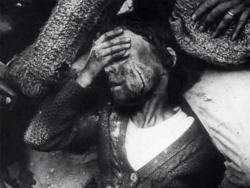
The War Game
1965 -
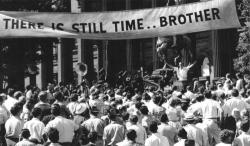
On The Beach
1959 -
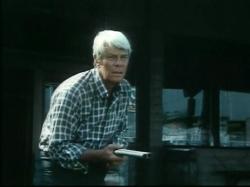
Where Have All the People Gone
1974 -

A Boy and His Dog
1975 -
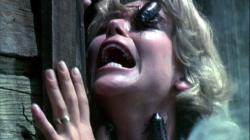
Bug
1975 -
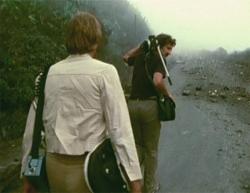
La Soufrière
1977 -
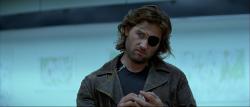
Escape from New York
1981 -

The Road Warrior
1981 -
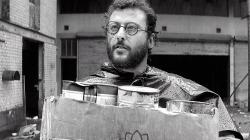
Le Dernier Combat
1983 -
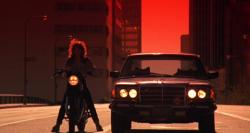
Night of the Comet
1984 -

Threads
1984 -
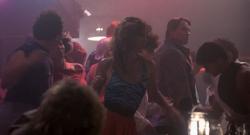
The Terminator
1984 -
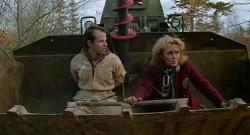
Def-Con 4
1984 -
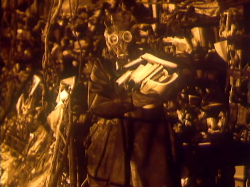
Letters From a Dead Man
1986 -
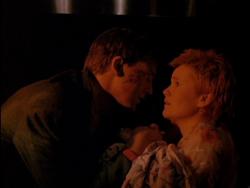
Miracle Mile
1988 -
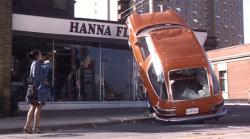
Last Night
1988 -

Last Days
2005 -
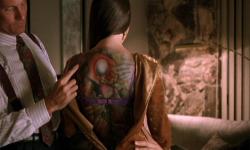
The Rapture
1991 -

Southland Tales
2006 -
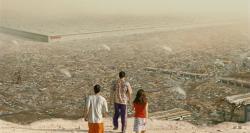
Idiocracy
2006 -

The Happening
2008 -
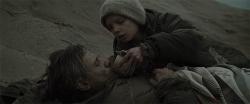
The Road
2009 -
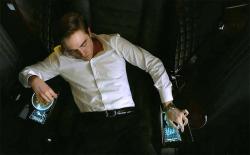
Cosmopolis
2012
We don’t do comments anymore, but you may contact us here or find us on Twitter or Facebook.



